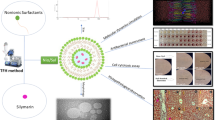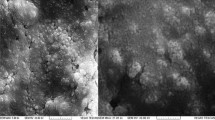Abstract
Niosomes and liposomes are one of the most widely used novel drug delivery systems. These carriers are tiny vesicles composed primarily of phospholipid molecules with an active surface. The essential oil of Trachyspermum copticum (Ajwain spice, also called caraway seeds or carrom seeds or Ajowan or Bishop’s Weed) is an effective antimicrobial agent against a wide range of bacteria. However, its use in the form of a solution is limited due to hazardous side effects. When the niosomal or liposomal form is used, the drug retains its properties against bacteria. The chemical and physical properties of liposome and niosome (size, lipid composition and lipid dose) play important roles in determining the drug retention. In this study, the effect of changes in drug/lipid ratio and lipid composition (phospholipid/cholesterol ratio) on feed efficiency of Ajwain essential oil was investigated. The carriers were manufactured using the thin film method and converted to 100 nm nanoniosomes and nanoliposomes by ultrasonic bath. Eventually, nanocapsules were produced by various concentrations of drug and lipid. After analysis of the results, an optimal formulation containing span 60/cholesterol/soy phosphatidylcholine/1,2-distearoyl-sn-glycero-3-phosphoethanolamine-N-[amino(poly(ethylene glycol))] was chosen for producing nanocapsules with 85% loading efficiency. The minimum inhibitory concentration 90% (MIC90) of the Ajwain essential oil was 0.05 and 0.08 µg/mL for Escherichia coli and Staphylococcus aureus, respectively. The MTT test showed that its toxicity for human skin fibroblasts is very low, quite similar to the control group. The intracellular transfection was also good.





Similar content being viewed by others
References
Geerligs M, Oomens C, Ackermans P, Baaijens F, Peters G (2011) Linear shear response of the upper skin layers. Biorheology 48(3–4):229–245
Boateng JS, Matthews KH, Stevens HNE, Eccleston GM (2008) Wound healing dressings and drug delivery systems: a review. J Pharm Sci 97(8):2892–2923
Amoabediny G, Haghiralsadat F, Naderinezhad S, Helder MN, Akhoundi Kharanaghi E, Mohammadnejad Arough J, Zandieh-Doulabi B (2018) Overview of preparation methods of polymeric and lipid-based (noisome, solid lipid, liposome) nanoparticles: a comprehensive review. Int J Polym Mater Polym Biomater 67:383–400
Goldberg M, Langer R, Jia X (2007) Nanostructured materials for applications in drug delivery and tissue engineering. J Biomater Sci Polym Ed 18(3):241–268
Zhang HY, Liang F, Zhang JW, Wang F, Wang L, Kang XG (2017) Effects of long noncoding RNA-ROR on tamoxifen resistance of breast cancer cells by regulating microRNA-205. Cancer Chemother Pharmacol 79(2):327–337
Larson ML, Rubenstein SE, Schiller GJ, Solomon SR, Louie AC, Paulsen KH, Lin TL (2017) Study design of an expanded access protocol of CPX-351 (Cytarabine: Daunorubicin) liposome injection in patients 60–75 years of age with secondary acute myeloid leukemia. Biol Blood Marrow Transplant 23(3):S249–S250
Xu H, Zhang L, Li L, Liu Y, Chao Y, Liu X, Jin Z, Chen Y, Tang X, He H, Kan Q, Cai C (2017) Membrane-loaded doxorubicin liposomes based on ion-pairing technology with high drug loading and pH-responsive property. AAPS Pharm Sci Tech 18(6):2120–2130
Seibel NL, Shad AT, Bekersky I, Groll AH, Gonzalez C, Wood LV, Jarosinski P, Buell D, Hope WW, Walsh TJ (2017) Safety, tolerability, and pharmacokinetics of liposomal amphotericin B in immunocompromised pediatric patients. Antimicrob Agents Chemother 61(2):e01477-16
Zarshenas MM, Moein M, Mohammadi Samani S, Petramfar P (2014) An overview on Ajwain (Trachyspermum ammi) pharmacological effects; modern and traditional. J Nat Rem 14(1):98–105
Aleksic V, Knezevic P (2014) Antimicrobial and antioxidative activity of extracts and essential oils of Myrtus communis L. Microbiol Res 169(4):240–254
Dastjerdi R, Montazer M (2010) A review on the application of inorganic nano-structured materials in the modification of textiles: focus on anti-microbial properties. Colloids Surf B Biointerfaces 79(1):5–18
Becker MA, Willman P, Tuross NC (1995) The US first ladies gowns: a biochemical study of silk preservation. J Am Inst Conserv 34(2):141–152
Forlani G, Seves AM, Ciferri O (2000) A bacterial extracellular proteinase degrading silk fibroin. Int Biodeterior Biodegrad 46(4):271–275
Siva Kumar V, Nagaraja BM, Shashikala V, Padmasri AH, Shakuntala Madhavendra S, David Raju B, Rama Rao KS (2004) Highly efficient Ag/C catalyst prepared by electro-chemical deposition method in controlling microorganisms in water. J Mol Catal A Chem 223(1–2):313–319
Tang Z, Liu S, Dong S, Wang E (2001) Electrochemical synthesis of Ag nanoparticles on functional carbon surfaces. J Electroanal Chem 502(1):146–151
Pradhan N, Pal A, Pal T (2002) Silver nanoparticle catalyzed reduction of aromatic nitro compounds. Colloids Surf A Physicochem Eng Asp 196(2):247–257
Yadav JD, Kulkarni PR, Vaidya KA, Shelke GT (2011) Niosomes: a review. J Pharm Res 4(3):632–636
Madni A, Shah K, Tariq M, Baloch A, Kanwal R, Rahim A, Khan MI, Rehman M (2017) Devising interactive dissolution experiment for pharmacy students (part II): use of dialysis bag method to evaluate effect of dialysis bag length on drug release from novel drug delivery systems. PSM Biol Res 2(1):7–12
Ong JCL, Sun F, Chan E (2011) Development of stealth liposome coencapsulating doxorubicin and fluoxetine. J Liposome Res 21(4):261–271
AcknowledgementS
The authors would like to thank all of the laboratory staff who helped this project.
Author information
Authors and Affiliations
Corresponding authors
Ethics declarations
Conflict of interest
There is no conflict of interest.
Additional information
Significance Statement
Tiny lipid vesicles containing essential oil of Ajwain (also called Caraway Seeds or Carrom Seeds or Ajowan or Bishop's Weed) were prepared in this study. Laboratory tests showed lack of toxicity for human skin cells, and its penetration into the cells was successful. The product was active against both gram-positive and gram-negative bacteria, making it suitable for skin disinfection and drug delivery in wound cover.
Rights and permissions
About this article
Cite this article
Tabatabai, M.B., Mirjalili, M., Yazdiyan, F. et al. Antibacterial Activity and Cytotoxicity of Nanoliposomic and Nanoniosomic Essential Oil of Trachyspermum copticum. Proc. Natl. Acad. Sci., India, Sect. B Biol. Sci. 89, 1109–1116 (2019). https://doi.org/10.1007/s40011-018-1025-6
Received:
Revised:
Accepted:
Published:
Issue Date:
DOI: https://doi.org/10.1007/s40011-018-1025-6




